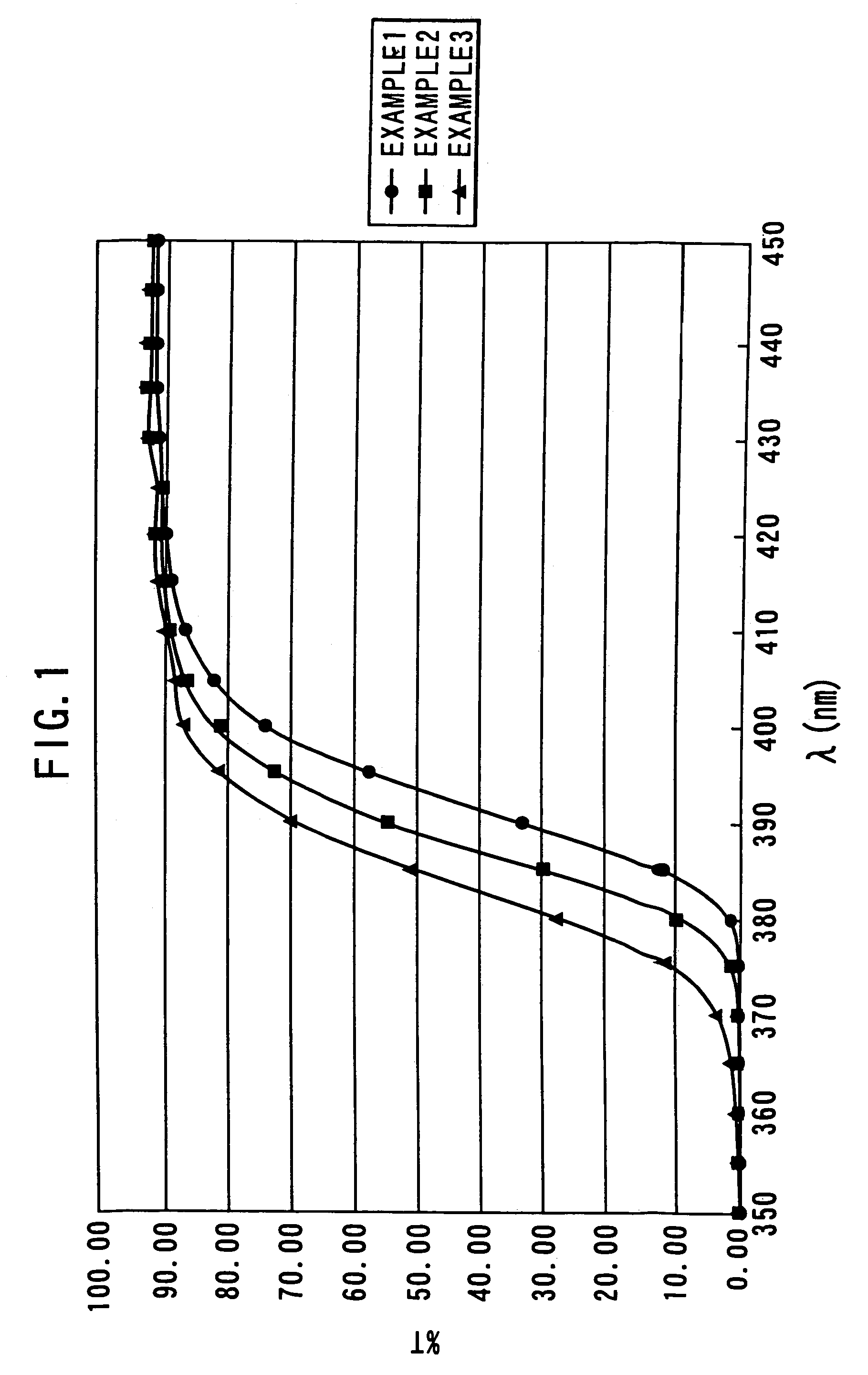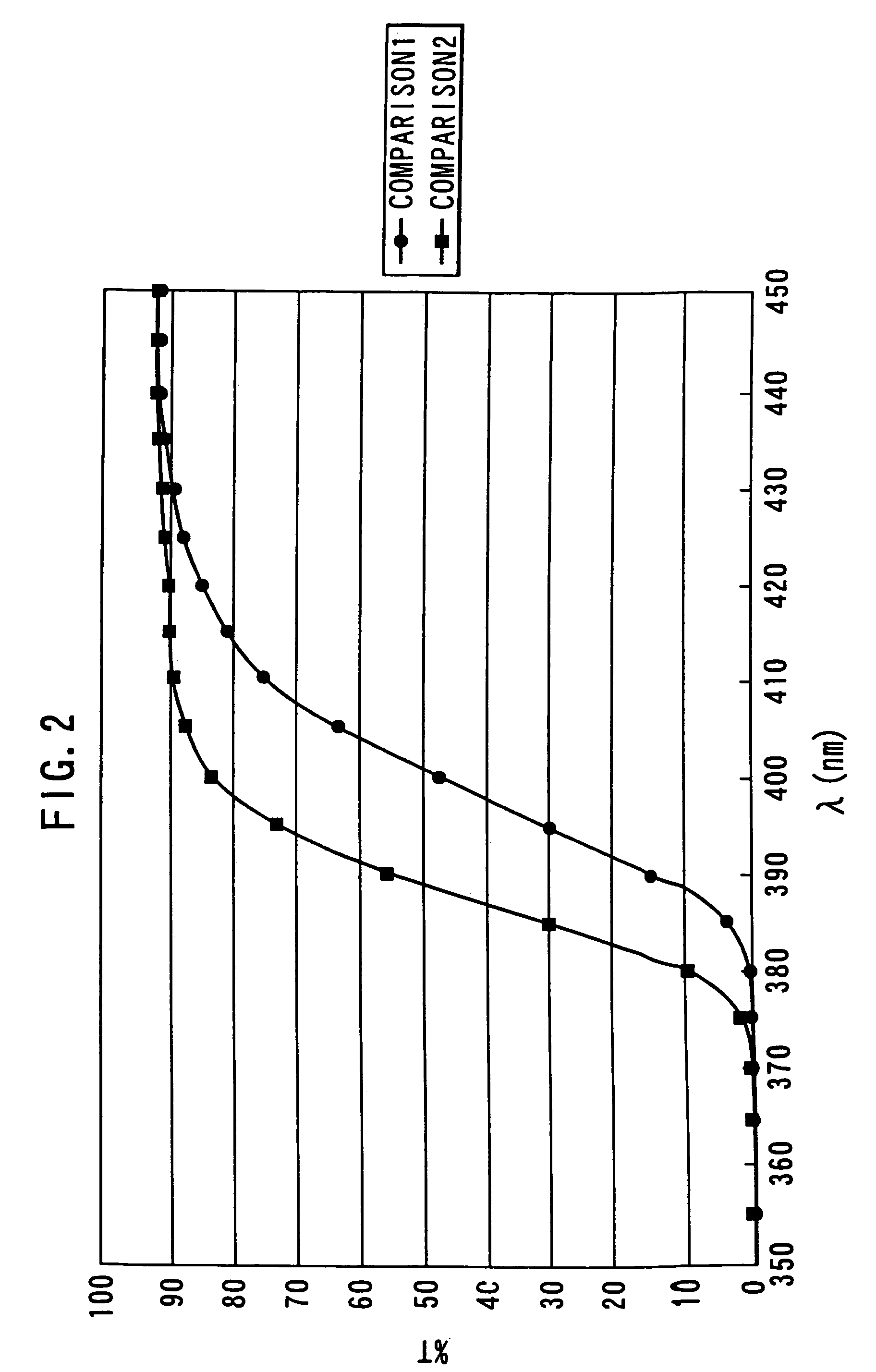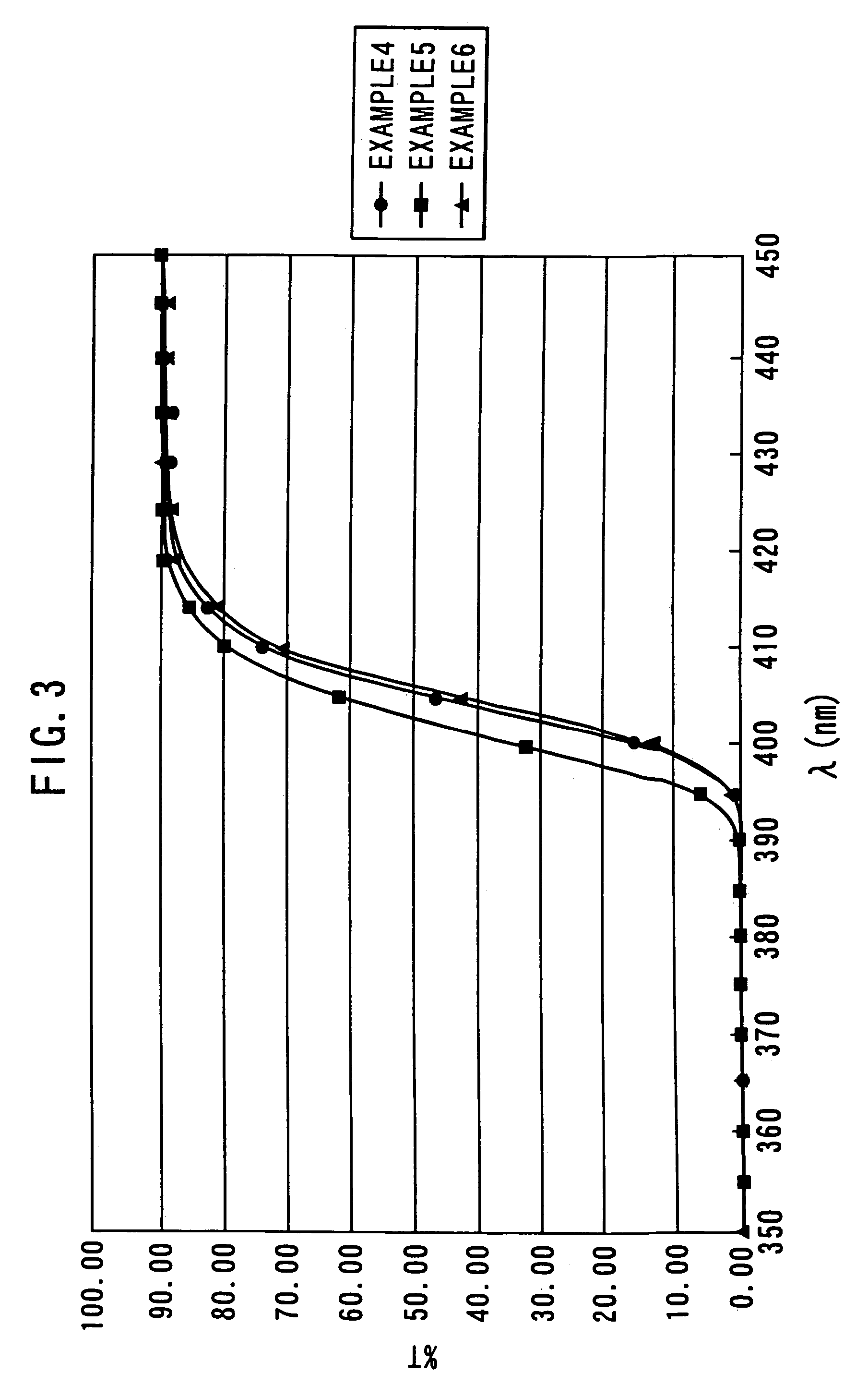Optical materials having good ultraviolet absorbability and method for producing them
a technology of ultraviolet absorption and optical materials, which is applied in the field of plastic lenses of good ultraviolet absorption for spectacles, can solve the problems of inability to absorb ultraviolet rays, poor appearance, and yellowish plastic lenses produced, and achieve the effect of reducing the amount of ultraviolet absorption to be added to the lenses and improving the ability to absorb uv rays
- Summary
- Abstract
- Description
- Claims
- Application Information
AI Technical Summary
Benefits of technology
Problems solved by technology
Method used
Image
Examples
example 1
[0050]To 100 parts by weight of diethylene glycol bisallylcarbonate, added were 0.10 parts by weight of 2-(2-hydroxy-4-octyloxyphenyl)-benzotriazole serving as a UV absorbent, and 3 parts by weight of diisopropyl peroxydicarbonate serving as a polymerization catalyst, and these were well stirred and mixed to prepare a monomer composition for lenses.
[0051]Next, the monomer composition was cast into a glass mold for lenses (lens power: 0.00 D, lens diameter 70 mm, lens thickness 2.2 mm), which had been previously prepared and equipped with a resin gasket. The mold was put into an electric furnace, and gradually heated therein from 40° C. up to 85° C. over a period of 20 hours and then kept heated at 85° C. for 1 hour, through which the monomer was polymerized.
[0052]After the polymerization, the gasket and the mold were released, and the lens formed was further heated at 120° C. for 1 hour.
[0053]The center (having a thickness of 2.2 mm) of the lens thus obtained had YI of 1.6. The lens...
example 2
[0054]A lens was produced in the same manner as in Example 1, to which, however, the amount of the UV absorbent added was 0.05 parts by weight.
[0055]The center (having a thickness of 2.2 mm) of the lens thus obtained had YI of 1.4. The lens was slightly yellowish, but its 380 nm UV transmittance was 9% and its UV-cutting capability was good. The spectral curve through the lens is shown in FIG. 1.
example 3
[0056]A lens was produced in the same manner as in Example 1, to which, however, the amount of the UV absorbent added was 0.025 parts by weight.
[0057]The center (having a thickness of 2.2 mm) of the lens thus obtained had YI of 1.0. The lens was slightly yellowish, but its 380 nm UV transmittance was 27% and its UV-cutting capability was good. The spectral curve through the lens is shown in FIG. 1.
PUM
 Login to View More
Login to View More Abstract
Description
Claims
Application Information
 Login to View More
Login to View More - R&D
- Intellectual Property
- Life Sciences
- Materials
- Tech Scout
- Unparalleled Data Quality
- Higher Quality Content
- 60% Fewer Hallucinations
Browse by: Latest US Patents, China's latest patents, Technical Efficacy Thesaurus, Application Domain, Technology Topic, Popular Technical Reports.
© 2025 PatSnap. All rights reserved.Legal|Privacy policy|Modern Slavery Act Transparency Statement|Sitemap|About US| Contact US: help@patsnap.com



